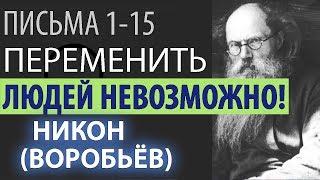
Crop Factor with ISO & Aperture: How Sony, Olympus, Panasonic, Canon, Nikon & Fuji Cheat You
Комментарии:

24mm is 16mm on APS-C, not 18mm.
Ответить
2023 still no one tell the truth abt this, haha
Ответить
👍
Ответить
So if I have a 1.5 crop sensor stated 300mm at aperture 5.6 and iso 1000, would the actual settings be 450mm at 8.4 and iso 1000, meaning I could put a 450 lens on a full frame at aperture 8.4 with ISO 1000 and have the same exposure, this would suggest that for the same focal length, a full frame is no better at gathering light through the lens than a crop sensor, maybe because the same amount of light is exposed to the sensor at a given "actual" focal length in a full frame or crop? If this is true then the only real advantage of the full frame at equivalent zoom, as far as low light is concerned, is its ability to cope with the higher gain of ISO, meaning even though it is the same light received onto the sensor as the crop at a given actual focal length, it is the ability to add and cope with higher ISO that would actually make it better at low light? I am new to photography so I may be getting this all wrong?
Ответить
Why don't manufacturers make fast lenses for small sensors? Yes, they would be as big and as expensive as f/2.8 lenses for full frame, but at least no one would need to pay extra for huge sensors in the camera body!
Ответить
Can you help me with this. I thought you implied that angle of few and field of view were interchangeable. I thought that angle of few was a function of the lens. Field of view was a function of the sensor. Wide angle lenses will distort faces more than longer focal lengths. The distortion will be present on both cameras but the field of view will show more or less of the scene. One of the reasons I prefer FF over Crop. Better working distance in small rooms w/FF.
Ответить
本来我不相信 但是用我的索尼a7c和奥林巴斯em1二代,自己试了一下,真的,都调到一样的参数。 一样的光圈,快门,iso。 果然全幅比奥林巴斯亮1档, 然后我发现奥林巴斯的jpeg是会自动提亮一档, 如果都用raw对比,全幅确实比奥林巴斯亮1档半左右,或者是2档 但是感觉不到2档 总之最少是亮1.5档。。。。
真不敢相信这竟然是真的。。。。。。。。无语。。

Great video!!!
Ответить
Dude! I do not miss that Fu Man Chu mustache.
Ответить
I was in disbelief until doing my own research and running the math. I'm floored. Thank you Tony and friends for putting this together for us. I live in Japan and can only say that my respect for Japanese manufacturers has taken a humungous hit after this. I shoot with Panasonic gear, and used to shoot Canon, but knowing this gives me much more to consider before making any further purchases. Thanks for doing the hard work. I think I'll create a video like this for the Japan market so that folks here can get a better understanding as well. What a damn shame.
Ответить
Thank you, great video that makes a lot clear! I'm thinking to sell my Olympus MFT for a FF camera, because I had the idea I didn't get a lot of light. Couldn't get sharp photos of a fast moving cat in a shed. Now I know why, because I have to double both aparature and focal lenght and have an ever higher ISO.
Ответить
Thank you.
Ответить
Firstly P/Sqrt(p) = just the sqrt(p)
What happens when photons hit a sensor is that they convert photon energy into photoelectrons by interacting with the silicon layer, but by interacting with the silicon layer they also vary in the timing of when they interact with the silicon layer causing imperfections in the "quality" of photons and therefore the conversion to photonelectrons - this "photon noise" is directly related to the photon energy (light intensity) in an inverse square ratio - i.e. the amount of noise generated by "quality" of photons is the square root of the intensity of the light interacting with the silicon layer on the chip or photon noise (noise) = square root of the photon intensity (signal)
But this formula only describes the input part - it doesn't describe the Signal to Noise Ratio, which is the measure of how well the total amount of light "in" (the signal) relates to the total overall noise "out" (of the entire processing system start to finish) that ends up producing the end electronic representation of the photons that hit the sensor and represented by the factors / formula below.
1. The amount of light energy per pixel per second ( like the photon volume or let's call this "P")
2. The efficiency with which the sensor can convert each of the photons into an electrical signal that can be interpreted and read (let's call this "E") - a bad sensor will lose some information which is the same as generating noise
3. The amount time that the sensor takes to accumulate & aggregate the photons into a readable signal (let's call this "T").
4. The internal current (noise) as a consequence of heat generated from the sensor itself converting photons to electrical signals (call the "H") a cold sensor will have much less introduced false electrons (noise) than a hot sensor
5. The read noise (let's just say the noise generated by the pre-amplifier on the chip for now and call this "R")
The formula for SNR is ... P x E x T / (sqrt of (P x E x T + H + R))
1. Is a natural phenomemon of the input and the same for all cameras
2-5 are consequenses of the manufacturing process of CCD sensors - and the main reason why newer sensors can generate lower noise outputs from inherently noisier photons (low light input).

This video is about 8 years old. Is this still relevant?
Ответить
P / sqrt(P) = sqrt(P)🤓
Ответить
Oh I should watch this before I got Fuji
Ответить
I need to upgrade to full frame so everything looks logic again
Ответить
Just like full frame sensors have a slightly lower DOF at smaller f-stops than is possible on a crop sensor, a four thirds sensor has slightly higher DOF at high f-stops, since it's not physically possible to stop down any more when you're already stopped down.
Ответить
It's scandalous is what it is, deliberate mis-selling. You are all being far too kind!
Not sure why there are 700+ negs.. If you think he's wrong explain it.

Question, in the astronomy market we know how to obtain the brightest image, and that’s through lens diameter, bigger is better. So why are we even comparing these at all. A small telescope gets a dimmer image due to its lens diameter. If I put a larger lens in front of my eye I would get a brighter image. The sensor, being the eye in the camera world would get a brighter image based on the lens in front of it. So comparing the 3 formats is unfair, wouldn’t you need to place the same lens on all 3 formats and also focus all the received light down to the sensor size????? In order to get the iso noise for each sensor???? Only then would you have a closer comparison, tech aside this would give you the best equal footing for all three sensor noise ratios, and I bet, they’re all the same. It’s the lens diameter that is the limiting factor.
Ответить
Very good educational video, thank you!
Ответить
Yes
Ответить
2nd or 3rd grade Algebra.....lol, most kids don't start Algebra until they start High School....
Ответить
I really don't understand why they don't just label and sell these lenses as the 35mm equivalent. How about instead of selling the lens as the 16-55mm f3.5/5.6 aps-c; instead, sell it to me as the 24-75mm, f5.25/8.4. I'll still buy it. I pretty much have to anyway.
Ответить
This is the best crop factor video ever.
One more thing, what about the shutter speed? Does sensor size affect shutter speed?.
If Fullframe with F/4, ISO 800, and 1 second Shutter speed equal to F/2.8, ISO 350 on APS-C,
what shutter speed on APS-C to match with the fullframe?

What if the settings are such that you are taking photos at 100 ISO on a full frame, then there is no way of reducing the ISO on APS-C or micro sensors and for same exposure might need higher shutter speeds which smaller cameras usually dont have.
This basically means someone with APS-C or micro sensor is limited to good lighting conditions.

Being an engineering background and that too mechanical, I had numerous doubts and confusion on how all these parameters worked. Sometimes I would think it's a blunder.
Watching this video, now I'm aware it's really a marketing blunder.

I first watched this video 4 years ago when i didn't know ANYTHING about photography. I didn't even know what focal length mm meant or what a prime lens was, I thought there were only zoom lenses, I thought ISO was light sensitivity, I thought higher fstop was better, I didn't know the word fstop nor that it's log and related to the "length" and diameter of the lens, I thought aperture only changed how much light got in, and i didn't know there were different sized sensors so i didn't know about crop factor at all.
I'm also really tech savvy so i wanted to know how autofocus works physically and color science and sensor tech and all the physics of cameras, and your channel answered all my questions and even questions I didn't even know I wanted an answer to, like how ISO works in terms of analog and digital gain/amp and AD or DA converters, and the science of contrast AF vs PDAF tech.
Absolutely everything I know about photography today, I learned it on your channel. Thanks to your videos, I learned about crop factor and I learned it the right way, not wasting years not knowing it's not only applied to focal length but also to aperture AND squared for iso. If I had bought apsc gear and not found your channel, I'd have learned about crop factor but only the way that manufacturers want me to learn it, only applying it to the focal length and it would've taken years to understand why I had to use slow shutter speeds and/or high ISOs even though I have an f2.8 lens, while getting an amateur looking bokeh even though those lenses cost $1000 so they're definitely not "amateur priced".
Also most importantly, I learned that ISO is pronounce eye-so and not eye-yes-o. That has improved my pictures way more than anything else i've learned (except I'm french so i already pronounced it the right way)

Can I know how to check the diameter iris size of any lens
Ответить
Thanks Tony!
Ответить
So if I want to assess which camera setup will produce less noisy footage (assuming shutter angle and frame rate constant) at given conditions in which I have no control over the amount of light, the only parameter I need to compare is the lens' apeture x sensor's crop factor? Is that right? I mean if we also assume no dual-gain/dual-native ISO features.
Ответить
They’re (Leica/Panasonic) finally making M4/3’s wide to normal zoom lenses in 1.4 now!!! And “surprise” it’s basically the same size as the lenses on FF sensors now lol
Ответить
hi Tony, you made that video about 6 years ago. Did Panasonic (I am particularly interested in Panasonic G9) correct its lenses f values? if they did, please let me know which lens has the correct equivalent value of full-frame. thank you so much.
Ответить
Should not the 24-70mm f/2.8 MFT lens be considered 48-140mm f/5.6 full frame equivalent if we apply crop factor to both numerator and denominator?
Ответить
Thankyou sir giving me this so important information.. you are great. love from India.
Ответить
wow, so well explained. thx!
Ответить
Beautifully reasoned and explained but please don't review Santa Claus or the Easter Bunny. Otherwise, keep up the good work.
Ответить
Hello Tony, one question, at the end you said that Fuji, Canon and Nikon are not cheating at the moment they specify the aperture in their lenses, do this applies now a day ( I ask because I see this video is from 2014), so for example, the Fuji 16-55 f2.8 is really a 2.8? is that the reason why is bigger and heavier than the new Sony apsc lens 16-55mm 2.8? how do I know they are not cheating?
thank you

Great video especially for one who is new to photography. A great series of videos for people just learning about photography.
Ответить
How does Sony Clear Image Zoom affect depth of field ?
Ответить
So much knowledge, so little time.
Ответить
Hi is it safe to say it's not focal length but the effective focal length / Iris diameter to get the proper fstop? Thanks for answering!
Ответить
Thank you! I value and trust your expertise. There are still a few questions I am seeking answers to. Do you have an explanation on why the 35mm format equivalent is applicable to APS-C lenses? (If APS-C lenses are designed specifically for crop sensor bodies wouldn’t this eliminate a need to apply the 35mm format equivalent?) Maybe a better question is what are the technical and aesthetic differences between a 50mm full frame lens and an 50mm APS-C lens when used on a crop sensor body?
Also, if a 50mm full frame lens produces the most proportionally correct and least distortion on a full-frame camera, why wouldn’t a 50mm lens also capture the most technically correct/least distortion on a APS-C body (if in-fact the image is generally the same except for the cropped portion and depth of field)? Generally, the 35mm on an APS-C body is described as having little distortion, comparable to that of the 50mm on a full-frame body, why?

Large aperture did not just bring a shallow depth of field but also more light. In my opinion, aperture was used for light metering, in this point of view, I think that calculating these “actual” and saying they are cheating is not fair. We just have to realize that the larger the sensor the more shallow depth of field we would get, e.g. comparing a 50mm f1.4 lenses used on a full frame and a APS-C DSLR, they could have the same depth of field, the APS-C is like cropping the full frame one 1.5 times. But a 35mm lens used on a APS-C camera, though bring you a focal length looked like a 50mm lens, which is not true, you are just using a 35mm lens and crop it 1.5 times. As for the depth of field, of course as the 35mm lens used on a full frame camera, not a 50mm lens😂. To be frank, your “calculation” of true aperture is quite misleading.
Ответить

























